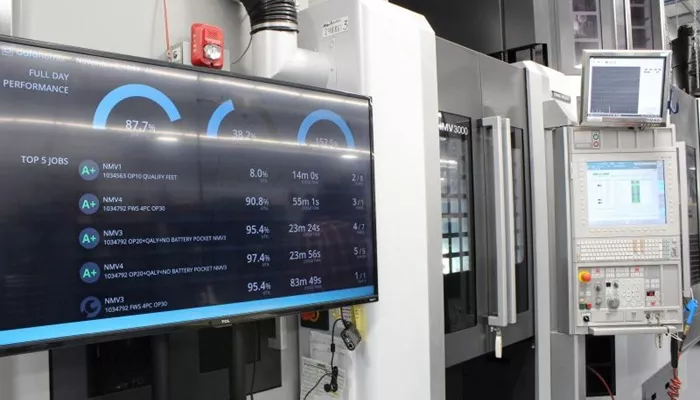In the era of Industry 4.0, data is becoming one of the most valuable assets in manufacturing. Companies are now seeking smarter and faster ways to improve efficiency, reduce waste, and move toward autonomous production. One of the latest technologies helping to lead this change is TMAC AI, an advanced tool monitoring system powered by artificial intelligence.
Smarter Tool Monitoring and Control
TMAC, developed by Caron Engineering, has been widely used to monitor machining conditions like cutting forces, spindle load, and vibration in real time. These capabilities help protect tools and reduce cycle times. Now, with TMAC AI, the system has taken a major step forward. It uses machine learning and predictive analytics to make smarter decisions during machining.
Unlike older systems that follow fixed rules, TMAC AI learns from each machine’s behavior and production results. It processes large amounts of sensor data from different machines and operations. With this data, it can predict tool wear, detect problems before failures happen, and suggest real-time adjustments—without needing human input.
Moving from Reaction to Prevention
A key benefit of TMAC AI is its role in predictive quality control. Instead of checking parts after they are made, the system monitors performance during machining. If it detects a potential quality issue, it raises an alert before the part is finished. This reduces scrap and prevents defective parts from reaching customers—an important advantage in industries like aerospace, medical devices, and automotive.
The AI models are trained on past production data and sensor patterns. They can spot tiny changes that signal upcoming quality issues. This allows operators and quality engineers to fix problems early, keeping tools sharp and parts within tight tolerances.
A Core Part of the Smart Factory
TMAC AI fits naturally into connected manufacturing systems. It works with CNC machines, manufacturing execution systems (MES), and enterprise resource planning (ERP) software. This creates a digital thread—a constant flow of data from the machine floor to business systems.
In smart factories, TMAC AI acts as a link between machines and decision-making systems. For example, if it finds a problem with a tool, it can automatically alert the scheduling system, reroute jobs, or order a replacement tool. This helps reduce downtime and improve productivity.
Enabling Autonomous Machining
TMAC AI also supports the shift toward autonomous machining, where machines run with little or no human supervision. This is key for manufacturers working toward “lights-out” production and zero-defect goals.
With TMAC AI, machines can change speeds, feed rates, and cutting strategies on the fly, based on tool condition and how the material responds. These automatic changes help extend tool life and keep part quality consistent.
The Future of Manufacturing
As AI technology grows more advanced, TMAC AI is becoming a key part of smart manufacturing. Future versions may use generative AI to help with process planning or connect with augmented reality systems to guide technicians during maintenance.
One thing is clear: TMAC AI is changing how factories operate. By combining real-time data with intelligent analysis, it supports a future of predictive, adaptive, and autonomous manufacturing.

